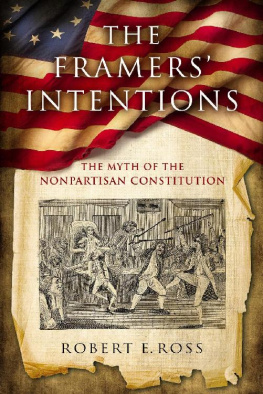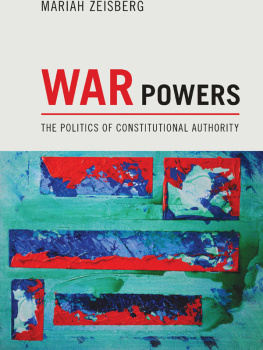First published 1992 by M.E. Sharpe
Published 2015 by Routledge
2 Park Square, Milton Park, Abingdon, Oxon OX14 4RN
711 Third Avenue, New York, NY 10017, USA
Routledge is an imprint of the Taylor & Francis Group, an informa business
Copyright 1992 Taylor & Francis. All rights reserved.
No part of this book may be reprinted or reproduced or utilised in any form or by any electronic, mechanical, or other means, now known or hereafter invented, including photocopying and recording, or in any information storage or retrieval system, without permission in writing from the publishers.
Notices
No responsibility is assumed by the publisher for any injury and/or damage to persons or property as a matter of products liability, negligence or otherwise, or from any use of operation of any methods, products, instructions or ideas contained in the material herein.
Practitioners and researchers must always rely on their own experience and knowledge in evaluating and using any information, methods, compounds, or experiments described herein. In using such information or methods they should be mindful of their own safety and the safety of others, including parties for whom they have a professional responsibility.
Product or corporate names may be trademarks or registered trademarks, and are used only for identification and explanation without intent to infringe.
Library of Congress Cataloging-in-Publication Data
Sharlet, Robert S.
Soviet constitutional crisis: from De-Stalinization to disintegration/Robert Sharlet.
p. cm.
Includes bibliographical references and index.
ISBN 1-56324-063-7 (cloth)
ISBN 1-56324-064-5 (pbk)
1. Soviet UnionConstitutional law. 2. Soviet UnionConstitutional history. 3. Soviet UnionPolitics and government1985 4. Soviet UnionPolitics and government19531985.
I. Title.
KLA2070.S43 1992
342.47'029dc2
[344.70229]
92-5285
CIP
ISBN 13: 9781563240645 (pbk)
ISBN 13: 9781563240638 (hbk)
Like so many other scholars, I have been chasing developments in the former Soviet Union for the past seven years, since Gorbachev came to power in 1985. With the dramatic collapse of the USSR that chase has ended, and in the future, attention will turn to Russia and the other successor states of the Soviet empire. But until the future reveals itself, it is essential, I believe, to study the past as prologue.
In this book I use Soviet constitutional and legal development as a framework within which to trace, from the late 1970s through 1991, the entwined processes of political reform and imperial decline in the vast Eurasian empire called the Union of Soviet Socialist Republics. In brief, this study moves along the interface of politics and law in the former USSR, the policy space in which post-Stalin Soviet leaders tried in various ways to maintain control of their closed society in a fast-changing world, first timidly and later more boldly attempting to reform the communist system.
Law and constitutional development increasingly became the leadership's instrument of choice in the quest for controlled change, beginning with the adoption of a new Soviet constitution under Brezhnev in 1977. Initially, the Communist Party saw in legal development an imposing and sturdy facade from behind which it could govern its subjects in the post-Stalin era. One might speak of this as the party dictatorship donning the more agreeable mask of law to soften its image. But in the mid-1980s, with the rise of Gorbachev, the law began to assume a modest life of its own, seeding an embryonic Soviet-style constitutionalism. In the next few years, not without difficulty, the first shoots of limited government began to push their way up through the still infertile soil of Soviet political and legal culture. A lawyer by training, as well as a committed reformer, Gorbachev concluded that constitutional forms would serve his ambitious goal of reform better than intransigent party committees. Accordingly, he assiduously nurtured and cultivated the growth of constitutionalism in the USSR.
Ultimately, Gorbachev's constitutionalism proved incompatible with Soviet authoritarianism. It became apparent that Gorbachev had not understood the irrepressible logic of the freedom he had licensed as he progressively lost control of the social forces unleashed, undermining the centralized state, immiserating the population, and subverting the system of social control. Nonetheless, Gorbachev did succeed in bringing Soviet politics out from behind closed party doors into an open constitutional arena, in the process redefining the idiom of power in the former USSR.
Will Gorbachev's constitutional legacy prove durable in the future or will Russia and the successor states relapse into new forms of authoritarianism? This question must await time (and another book). For now, my task is to provide student and scholar alike with an analysis of the Soviet constitutional crisis from de-Stalinization to disintegration.
The book begins with a brief survey of the long political struggle to introduce the forms of constitutional government into Russia, from the tsars through the Soviet period. I turn to Mikhail Gorbachev, the emergence of Soviet constitutionalism, its destabilizing effects on the communist system, and the unintended result of Gorbachev's reformist legal policypolitical decline, leading in the end to the disintegration and collapse of the USSR.
At the back of the book, students will find a chronology of key events in Soviet political and legal development (1917-1991) as well as an extensive bibliography of readings for further study on the myriad aspects of the Soviet system from Brezhnev through Gorbachev.
, n. 81), I have not reproduced the document in this volume. Instead, I direct the interested reader to the following sources. For the Constitution from its adoption in 1977 to 1988 (minus the only amendment adopted during that period, a minor one in 1981), see Robert Sharlet, The New Soviet Constitution of 1977 (Brunswick, OH: King's Court, 1978); for the extensive 1988 amendments to the Constitution, see Review of Socialist Law, vol. 15, no. 1 (1989), pp. 75-118; for the Constitution as it appeared after additional major amendments in 1989 and early 1990, see either F.J.M. Feldbrugge, "The Constitution of the USSR," Review of Socialist Law, vol. 16, no. 2 (1990), pp. 163-224, or W.E. Butler, trans, and ed., Basic Documents on the Soviet Legal System, 2nd ed. (New York: Oceana, 1991), pp. 3-44; and, finally, for the much amended Constitution of 1977, including the revisions from the latter half of 1990 up to August 1, 1991, see Gordon B. Smith, Soviet Politics: Struggling with Change, 2nd ed. (New York: St. Martin's, 1992), pp. 348-79.
For readers interested in translations of individual amendments as they occurred, see FBIS, Daily Report: Soviet Union (since renamed Daily Report: Central Eurasia ); for the amendments in their immediate political context, along with excerpts from the relevant parliamentary debates, see Current Digest of the Soviet Press. For translations of post-coup constitutional developments through the end of 1991 and the Soviet regime, see The New York Times.













